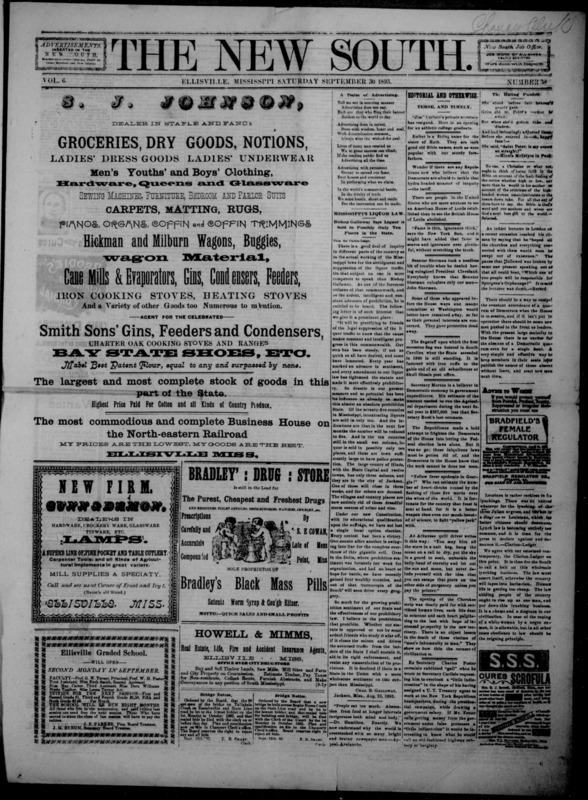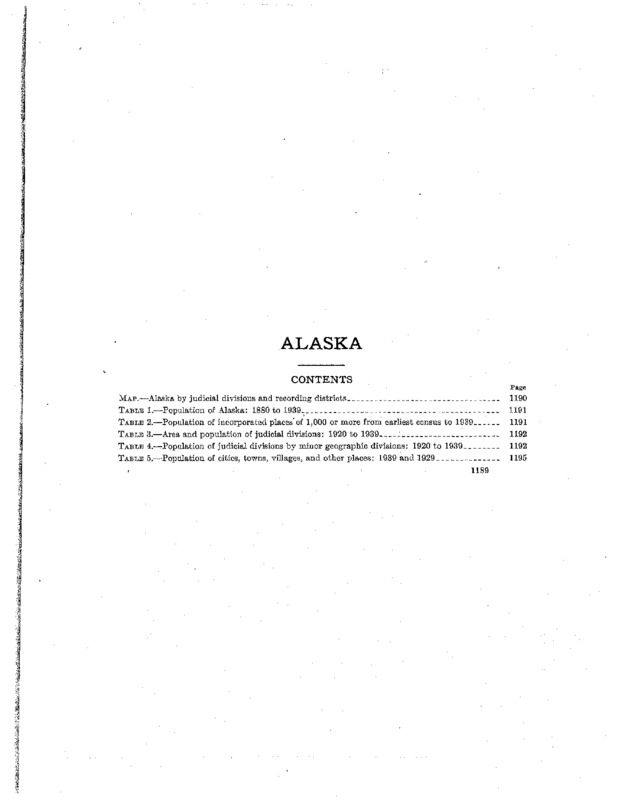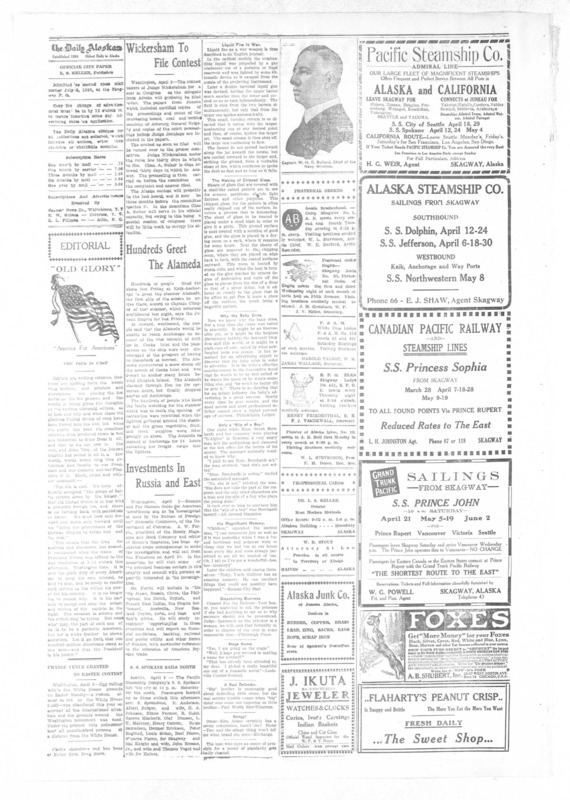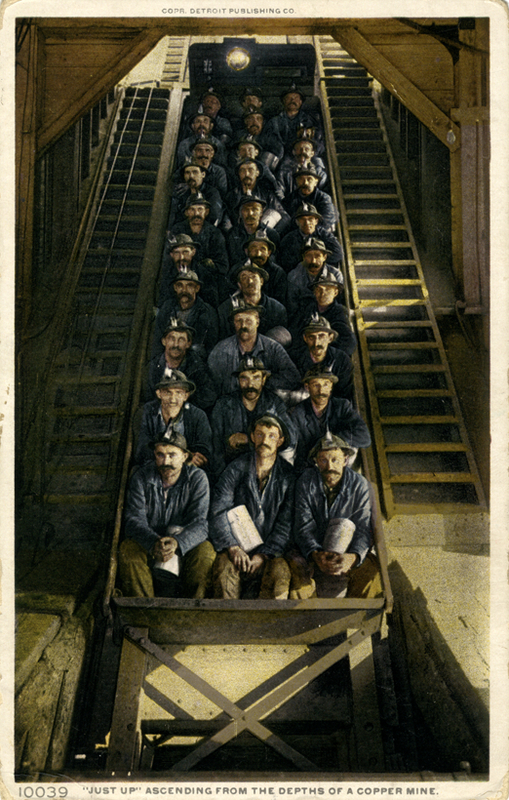The Newspapers
New-York Evening World
The New York Evening World, the evening edition of the New York World was published from 1860 to 1931 in Manhattan (New York City). My research focuses on the newspaper's run from 1890 to 1895 but the newspaper participated in notable events such as helping to transport the Statue of Liberty from France to Manhattan in 1882 and advocating in "yellow journalism" which lead to the American declaration of war against Spain in 1898 (Spanish-American War). Based on the articles of the New York Evening World, the newspaper clearly takes a pro-Democratic stance and favors lower-class citizens, middle-class citizens, and immigrants who were generally aligned with the Democratic party. The newspaper portrays Republican party figures in a negative fashion by presenting them as the "villains" of politics through descriptions in articles and their portrayal in political cartoons.
Waterbury Evening Democrat
The Waterbury Evening Democrat was a newspaper based in Waterbury, Connecticut starting in the years of 1882-1883, as The Valley Democrat. This newspaper was a weekly newspaper. Before officially becoming The Waterbury Evening Democrat, the newspaper had a series of names. After 1895, it was known as The Waterbury Democrat. The full duration of its run was from 1881 through 1946. Known simply as The Democrat, it was considered a paper for the people, by the people. It was a six-day per week service as The Waterbury Democrat and appealed to every person in the family, especially those with more liberal political ideologies, since its political leaning was Democratic. The newspaper was highly regarded for the way it promoted Democratic values, alongside its coverage of Irish and Catholic topics. According to the website Connecticut Digital Newspaper Project. The Waterbury Evening Democrat was read in 75% of homes in Waterbury, making it the most popular local newspaper at the time.
It was originally founded in 1881 by the Irish immigrant, Cornelius Maloney and it was the only Democratic newspaper in the Naugatuck Valley. The Naugatuck Valley is in the southwestern part of Connecticut, running along Interstate 84 and the Naugatuck River, and includes the New Haven area and Fairfield County. The newspaper served this geographical area and specifically Waterbury and the neighboring towns of Naugatuck, Oakville and Watertown. The Waterbury Democrat originally began as a family project with Maloney and his brother, Michael Thomas Maloney. The two had established a publishing firm in 1882, which was the precursor to their newspaper business. Cornelius had worked first as a printing apprentice in New Britain at the firm of Oviatt & Guernsey where he learned the newspaper trade. He later had worked for the New Britain Record and the New Britain Observer before starting his own newspaper with his brother. As Irish immigrants, they and their Irish comrades had largely overcome discrimination from the Protestants and were now building themselves up in local politics during these times. The Maloneys’ democratic politics were heavily reflected in the newspaper.
The Star-Independent
The Star-Independent was published in Harrisburg, Pennsylvania during the 1900s. The newspaper ran for thirteen straight years. The newspaper began with its first publication in 1904 and the newspaper ended with its last publication in 1917. Luther R. Kelker who was a part of The History of Dauphin County 1907 described The Star-Independent as "one of Pennsylvania's great daily papers." It was produced and sent out every day except Sundays. Each edition of the newspaper is about twelve pages long. They had 56 volumes beginning in September 1904 and upping it to 81 volumes in 1917. 25 total number of volumes between the thirteen years it was active. Vol. 56, no. 70 (Sept. 3, 1904)-v. 81, no. 59 (Feb. 10, 1917). From the beginning to the end of the newspaper after it was sold. The newspaper was sold in January of 1917 to the Harrisburg Telegraph. Beginning in 1917, it changed to the Harrisburg Telegraph. The newspaper had large articles from big events happening not only in Pennsylvania but in other states and internationally as well due to the headlines. The newspaper history is mainly focusing on the news going on in the 1900s in Pennsylvania and if there was a big news in another state, or international that are important for the people of the American to know. Then the newspaper would cover those stories either on the front page or within the newspaper itself. The newspaper published national, international and regional news, and because they had news coverage for all over, they talked a lot about World War I when it first broke out since it was the big topic and a huge event beginning international and then branching into the lives of the American people. They also reported on sports especially baseball which was very popular,and they talked about different sports teams and their achievements. They had 56 volumes beginning in September 1904 and upping it to 81 volumes in 1917. 25 total number of volumes between the thirteen years it was active.The newspaper was sold in January of 1917 to the Harrisburg Telegraph Beginning in 1917, it changed to the Harrisburg Telegraph. The newspaper had large articles from big events happening not only in Pennsylvania but in other states and internationally as well due to the headlines. The newspaper history is mainly focusing on the news going on in the 1900s in Pennsylvania and if there was a big news in another state, or international that are important for the people of the American to know.Then the newspaper would cover those stories either on the front page or within the newspaper itself. The newspaper published national, international and regional news,and because they had news coverage for all over, they talked a lot about World War I when it first broke out since it was the big topic and a huge event beginning international and then branching into the lives of the American people. They also reported on sports especially baseball which was very popular,and they talked about different sports teams and their achievements. They had 56 volumes beginning in September 1904 and upping it to 81 volumes in 1917. From the beginning to the end of the newspaper after it was sold. The newspaper was sold in January of 1917 to the Harrisburg Telegraph. Beginning in 1917, it changed to the Harrisburg Telegraph. The newspaper had large articles from big events happening not only in Pennsylvania but in other states and internationally as well due to the headlines. The newspaper history is mainly focusing on the news going on in the 1900s in Pennsylvania and if there was a big news in another state or international that are important for the people of the American to know Then the newspaper would cover those stories either on the front page or within the newspaper itself The newspaper published national, international and regional news and because they had news coverage for all over they talked a lot about World War I when it first broke out since it was the big topic and a huge event beginning international and then branching into the lives of the American people. They also reported on sports especially baseball which was very popular and they talked about different sports teams and their achievements.
The Daily Alaskan
The Daily Alaskan was a Southeast Alaska-based newspaper that ran from March 1, 1904 to July 31, 1924. It was published in Skagway, Alaska, a city of 3,117 in 1900 and a meager 492 by 1930. The sudden influx of citizens to Skagway was mainly because of the gold rush which was going on at the time. Town and Jenson, The Daily Alaskan’s publishers, workshopped four different names for the paper. The first of which was The Morning Alaskan (February 1, 1898, last issue February 14, 1898). Then, it briefly became The Alaskan (July 2, 1898, last issue February 3, 1899), after which the name changed again to The Daily Morning Alaskan (February 21, 1899, last issue February 28, 1904). Finally, it was published as The Daily Alaskan. It was published triweekly, which means that there was breaking news from the area and the world at large at least three times a week. Comparatively, the early twentieth century New York Times published weekly. The paper does lean politically towards the democratic party, albeit in subtle ways. For example, home rule is advocated and highly encouraged in one issue. Furthermore, each installment provides a brief overview of global as well as local issues. The Daily Alaskan credits itself as the “oldest daily in Alaska.” One year of subscription to this newspaper cost a mere $9.00, $194.92 in today’s dollars.
The Calumet News
The Calumet News began printing its daily news in 1907. The paper was a relaunch of the Copper County Evening News that was owned by the Mining Gazette company. It ran for 31 years until, in 1938, the paper was rebranded into the Evening News-Journal and eventually merged with the Daily Mining Gazette in 1943. It was published daily in the afternoon in Calumet, Michigan except for Sundays and major holidays
The population of Calumet consisted of Scandinavians, Canadians, Central Europeans, Chinese, French, Polish, Russians, Italians, and Americans. As in any area of the United States during the early 1900s, there was discrimination towards different cultures and Calumet was no different. The copper countries were heavily separated, and the Calumet News reported on the news that everyone could relate too. They tried to make the paper neutral and have something for everyone in it. They kept their articles and advertisements bias and did not have a political preference. They reported the facts just like any journalist. Having their paper neutral attracted a large audience and people from all races. This helped be a successful newspaper for 31 years.
Jersey City News
The Jersey City News operated out of Jersey City, New Jersey. The newspaper ran for a full seventeen years on a daily basis, from February 25th, 1889 to December 22nd, 1906, but would not run on Sundays. The publishing company shifted throughout the years that the paper was running, but eventually stayed consistent with the City Publishing Company. The editior of the paper, James Luby, served as the daily editior of the newspaper from the very start of the paper in 1889 until 1903 when he transferred to The New York Sun. The Jersey City News had a related newspaper that would only be produced on Sundays, which was called The Sunday Morning News. Although the papers had a different publisher and editor, the related piece was known simply as the Sunday edition of The Jersey City News. The newspaper expresses very clearly their political stance by claiming to be the only Democratic daily newspaper in Jersey City. The clear democratic stance that The Jersey City News expresses is in direct contrast to another newspaper that ran at the same time in Jersey City, the Evening Journal, which had a very conservative slant.
New South
The New South was published by a man named James J. Shannon. It ran as a weekly paper in the town of Ellisville, Mississippi. Although it was distributed from 1888 to 1905, it ran as a true weekly newspaper for six years from 1892 to 1898. Ellisville has had a range of Democratic newspapers covering events and stories around the state. The first newspaper that was run in Ellisville was called the Alliance Eagle and was published in 1881 by Washington L. Lee. It was run as a democratic four-page weekly. Shortly after it began, the Alliance Eagle ceased publication most probably because Lee sold it to the owners of the already four-year-old New South or to the Ellisville News. Ellisville, Mississippi was largely a Democratic town within a democratic country within a democratic state. James J. Shannon was previously a founder of another newspaper, The Clarion, as a democratic organizer. The political leaning of this newspaper is clearly democratic. The New South covered stories from Ellisville, Jones County, Mississippi, and the rest of the world in a democratic veil. In 1905, the New South and the Ellisville News were combined and the name of this newspaper was changed again to the New South-News. In 1909, Edgar G. Harris became an administrator of the New South-News and changed the name once again to Jones County News.
Americans living in the southern states were slow and resistant to both economic and social changes. The people who owned the newspapers were essentially the speaking for the rest of the world by writing and publishing information and stories about the newsworthy events that they obtained. The issue with southern newspapers was that they had a tendency to down play troubling events that occurred in the south while over emphasizing similar events that took place in the northern states. According to Roger M. Williams, “Race is the standard by which all Southern newspapers must be judged because it is the issue that has molded the South and its people." Racism shaped how Southerners viewed themselves in comparison with other individuals across the globe. Publishers of southern newspapers had the ability to lead their readers in the direction of change. However, not many of them did so. Instead, the publishers ignored their responsibilities and disregarded the problems that were occurring right in front of them. There is an obvious difference between the way stories were written about African Americans in comparison to White Americans. The New South is not an outlier within these facts. Williams also stated in the 1960s that, “Mississippi has the weakest press of any state in the South, one sure reason for the terrible difficulty the state has had accepting the changes thrust upon it.” Instead of using his platform to promote the changes that Mississippi was facing and help sort of ease into them, Shannon chose to ignore them and publish his own resistant reflections of change. James J. Shannon used his position as publisher to subtly force his opinion on the events so his readers of the New South would think and vote democratically, the way he desired them to.
Labor Argus
The Labor Argus is a Socialist paper that was published from 1906 until 1915, when it merged with another socialist paper in the area, The Socialist and Labor Star to form a paper called The Argus-Star. The Labor Argus was based in Charleston, West Virginia. It is a left leaning paper, being more center-left pro union style with it’s first editor, Frank Snyder. However, in 1911 the paper came under a new editor, Charles H. Boswell, who took the leftist politics even further, turning the paper into a “red hot radical revolutionary rag” The paper, unsurprisingly, focused on labor issues, especially mining labor, as this was a very hot topic in West Virginia during the late 19th and early 20th century. It was typically a smaller paper, it didn't have a set size, but is normally 4 to 6 pages. The paper and it’s revolutionary editor Charles Boswell were very active within West Virginia, so active in fact that it has a record of government interference with it, like when governor of West Virginia, William Glasscock, confiscated the printing equipment after Boswell had criticized a settlement between the United Mine Union and the ownership class that had been viewed favorably by the Governor. This harsh criticism by Boswell got him into more than just printing trouble, because when conditions got so bad between the miners and owner class, there was armed fighting between the armed Unionist Miners and the ownerships hired guns, the Baldwell-Felts Detective Agency. Boswell was accused in helping the arming of the miners, and the Labor Argus was used as evidence against him as it had sections of calling for violence against the ownership class, seemingly with no remorse.
Capital City Courier
The Capital City Courier was a newspaper published in Lincoln, Nebraska, from 1885 to 1903, which was known as a "society newspaper," covering the gossip, as well as the cultural and social events of the area, a style popular in the Midwest at the time. As it gained popularity, it regularly published submissions from many locals, ranging from simple letters to the editor about previously published articles, to poems, art, and even songs accompanied by full music sheets and lyrics. Being a "society newspaper," it made sure to include the happenings of many prominent (and many of the common) individuals in Nebraska society, recording who was traveling outside the area, or what people had seen around town.
Even though local society was important, news, and in particular local news, was the basis for the paper, with events important to the Lincoln/Lancaster County holding special importance. However, there was a substantial amount of information that rode in from New York and Chicago, and even from overseas from Europe.
Regarding politics, the Capital City Courier remained apolitical for quite some time, with a present political stance not appearing until the March 31, 1894 edition, where the paper took a heavily pro-Republican stance by plainly stated that "Anyone who intends to cast a vote for an Independent or Democratic candidate should remember that the Independents and Democrats have already had altogether too much encouragement in this Republican city and county, that the apathy of Republicans has allowed the opposing parties to capture the more important offices, and that there is much danger in allowing them or either of them to obtain a stronger foothold."
Oxford Democrat
The Oxford Democrat was founded in 1833 in rural Paris, Maine, by Octavius King and George W. Millett. Both publishers were trained in printing by Hannibal Hamlin, then a printer in Paris (creator of the Jeffersonian), but later the 15th Vice-President of the United States with Abraham Lincoln. Originally a Democrat paper (as the title implies) and a staunch supporter of the Democratic Party in Maine, it later underwent a transition towards the Republican Party during Prohibition, favoring the new amendment. In total, the paper ran for 100 years, merging with the Norway Advertiser in 1933 due to the economic recession. Though, the Oxford Democrat is still printing today under a different name: the Sun Journal. Even though Oxford County today has a population density of 27 people per square mile, the region saw over twenty five different newspapers between 1833 and 1933, speaking to the interests of the society and the people.
Hawaiian Gazette
The Hawaiian Gazette was an American newspaper that was published in Honolulu and ran weekly from 1865 to 1893 and bi-weekly from 1894 to 1918. In 1865 the Gazette became the official newspaper of the monarchy under King Kamehameha V, published under James H Black, and edited by John Mott Smith until 1873. In 1873 the newspaper became anti-monarchy after King Kalakaua and Sanford B. Dole, a wealthy American plantation owner, clashed over possible United States annexation and the sugar industry in Hawaii. From 1873 to 1887, when Henry M. Whitney became the editor, he pushed for free speech and to minimize government influence which enabled him to publish support for the American government. In 1883 when the Bayonet Constitution was enacted, which stripped the monarchy of its power and established a new government that was headed by the American plantation owners, supported Dole as the new governor of Hawaii and favored pro-American sugar and annexation interests. In 1893 the paper refused to publish Queen Liliuokalani’s reformative pamphlet which attempted to restore power to the Hawaiian monarchy and referred to her as the Ex-Queen. In 1903 new technological advancements changed the newspaper industry in Hawaii. With the completion of the Pacific Line, an underwater cable that went from San Francisco to Honolulu that brought the first direct line of communication from America to Hawaii as well as to China, Japan, and the Philippines. This cable brought a more efficient way to receive news across the Hawaiian Islands and combined with competition from other newspapers this resulted in the Gazette ending publication in 1918.

About the Newspaper (front page)
This image shows the typical layout for the front page of the New South’s front page of their issues. The title of the newspaper is in capital bolded letters at the top. On the left side of the front page, they print ads for a variety for services, stores and items that can be purchased. On the right side of the page, they start printing some of the stories that ran throughout the issue.
The Sacramento Daily Record-Union
The Sacramento Daily Record-Union or as it began publishing as on March 19th, 1851, The Daily Union, would run for 143 years. The paper would go through rapid changes in the 1850’s as it changed publishers three times going from C. L. Hansiker & Co. to E. G. Jefferis & Co. in 1852 and then being sold again in 1853 to James Anthony & Co. This time following a devastating fire that saw almost everything the company owned burned down, save for one of its printing presses. The paper grew quickly with its first editor John F. Morse and would soon become a backer of the Whig party. Morse had gone on record saying that the The Sacramento Daily Record Union was committed to "publish the first news in the best style and at the lowest prices." Morse is also partially responsible for the paper’s commitment to local news wanting to better service Sacramento’s large mining and farming communities, the paper was often referred to as “The Miner’s Bible”. Part of the The Sacramento Daily Record Union’s most successful times was its publishing of Mark Twain’s writing on his trip to Hawaii in 1866. The paper was always focused on local events, but would often write of foriegn news and national news if it had an effect on Sacramento such as the 1882 Chinese Exclusion Act ast there was a large Chinese population in Sacramento at the time, who mostly worked on the railroads and farms. The Sacramento Daily Record Union would steadily drop in readership starting in the 1890s as it was losing to its longtime rival paper, the Sacramento Evening Bee. After changing titles two more times to the Sacramento Union in 1903 and later The Union in 1991, the paper would eventually cease publication on January 14th,1994 with the headline of “We’re History”, The Union had finally lost to the Bee. The Sacramento Daily Record Union would briefly live on as a magazine in 2005 and later as a much smaller free tabloid paper that ran from 2006 and ended in 2009, ending the over a century long legacy of The Sacramento Daily Record Union.
The Ocala Evening Star
The Ocala Evening Star began publishing in 1895 and ceased it’s publishing in 1943. The Ocala Evening Star began its circulation in Ocala, Florida and spread through the Marion County fast. The Freeze of 1895 in Ocala Florida kick started the Ocala Evening Star due to its devastation of the crops which many farmers and locals used as a way of life. In the 1920’s and 1930’s R.N. Dosh was the editor, later C.L Bittinger became the editor and business manger for the Ocala Evening Star. When the Ocala Evening Star Newspaper started up, it started as rival newspaper to The Ocala Banner in 1895. Although the Ocala Evening Star continued to publish weekly, except on Sundays, merged with the Ocala Banner on September 1st, 1943 ending the publication of the Ocala Evening Star and beginning the newspaper known as Ocala Star-Banner.



